Delving into the contemplative world of monks, we will explore why their meditative practices can often span an extensive period, creating profound changes in their well-being and perception.
Monks, especially those in the Buddhist tradition, are renowned for their deep dedication to meditation. While the length of their meditation sessions can vary greatly depending on the particular tradition or individual practice, it’s not uncommon for monks to meditate for several hours a day. Some may meditate for as much as 3 to 4 hours in the morning, and then again in the evening.
It’s important to note, however, that meditation for these monks is not limited to these formal sessions. Many incorporate mindfulness into every aspect of their daily lives, effectively making their entire day a form of meditation. Dive deeper into this article to explore the fascinating intricacies of monks’ meditation practices and the profound impact it has on their lives.
Key takeaways:
- Monks meditate for several hours a day
- Meditation is not limited to formal sessions, it’s a way of life
- Beginner monks start with shorter sessions, experienced monks meditate for hours
- Challenges in long-duration meditation: focus, physical discomfort, emotions, discipline
- Monks follow various meditation practices: Vipassana, Samatha, Mettā, Zen, Walking Meditation, Mantra Meditation
Monks’ Daily Meditation Schedule
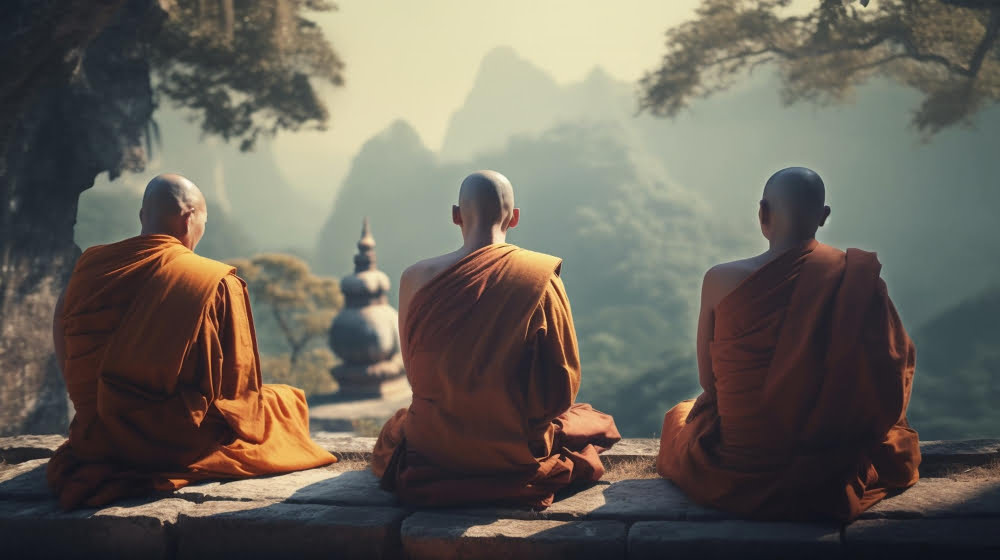
Monks typically begin their day early, around 4 or 5 a.m., with meditation to cleanse their minds for the day ahead. This initial session can last anywhere between one to two hours.
Following their morning duties and vegetarian meal, a more extensive meditation period typically happens during the afternoon, potentially lasting up to three to four hours.
Depending on the monastery and the individual monk, additional meditation sessions might sprinkle throughout the day and before sleeping. Specific times can vary greatly; remember, these practitioners dedicate their lives to mindfulness and spiritual growth.
It’s essential to understand that these hours of concentration are not merely about quantity; they serve a consistent practice aim to deepen awareness and understanding.
Difference in Meditation Duration Between Beginner and Experienced Monks
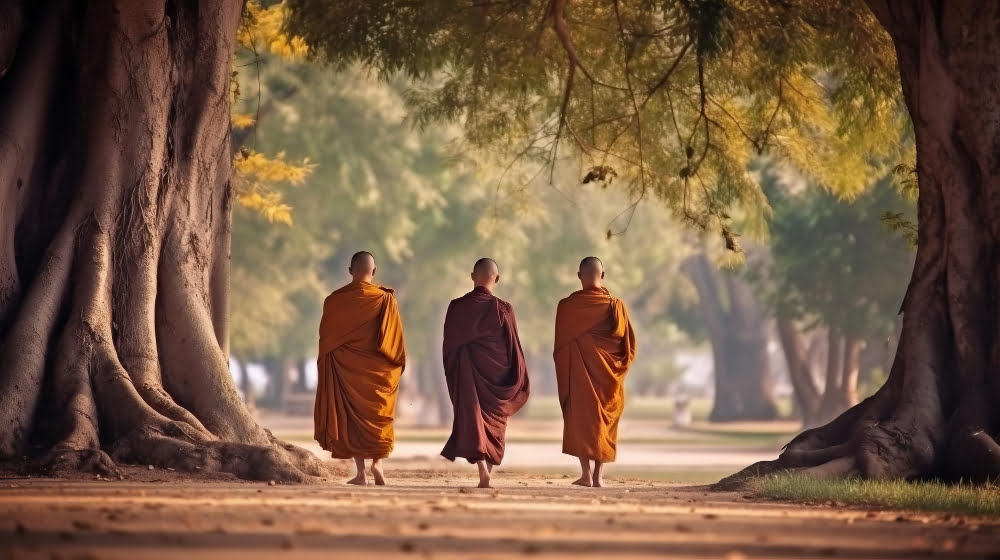
When one is just starting out, maintaining attention and focus during meditation can be a bit challenging due to the unfamiliarity of the process. Consequently, beginner monks often start with relatively shorter sessions, usually between 15 to 20 minutes long, repeated several times throughout the day. As they become more acclimated to the practice, their ability to concentrate for extended periods improves.
On the other hand, experienced monks can remarkably meditate for hours with uninterrupted concentration. There are accounts of some able to maintain their meditative state for an entire day, granted, with interludes for essential tasks such as eating and attending to personal needs. This extended duration of meditation is a result of cumulative years of training and dedication to the practice, which eventually leads to the development of a heightened state of focus.
While it’s important to highlight the difference in duration between beginner and advanced practitioners, it’s essential to note that the goal of meditation is not simply about clocking in as many hours as possible. The primary purpose remains cultivating awareness, enhancing concentration, and attaining a state of tranquility. As such, consistency in practice, irrespective of session duration, is what monks consider more critical.
Challenges Encountered in Long-duration Meditation Sessions
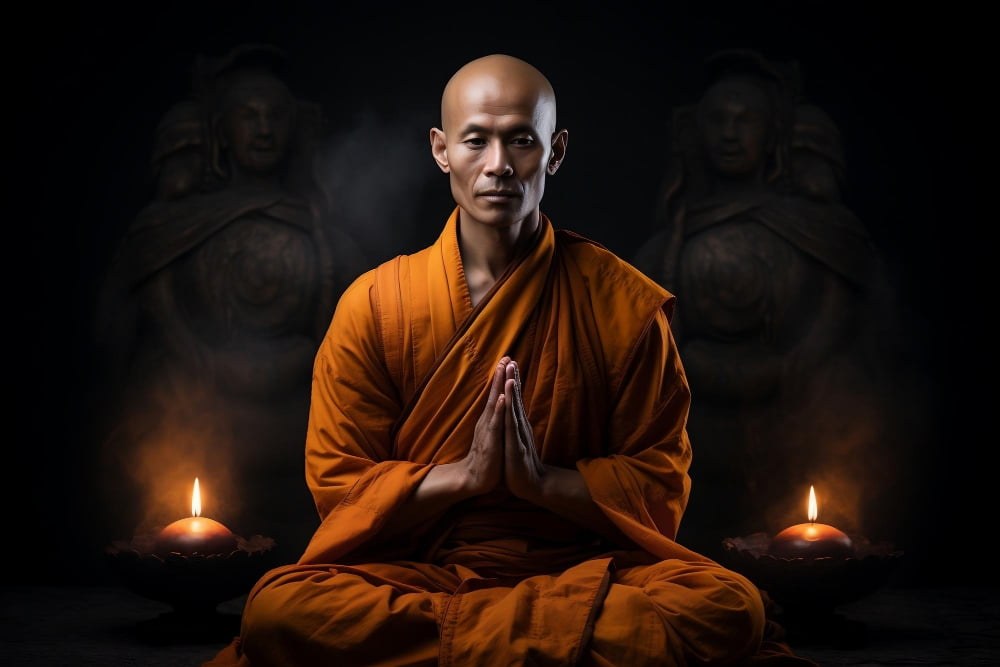
Maintaining focus for extended periods often poses a considerable challenge. The mind is naturally prone to wander, leading to distractions that can disrupt concentration. Monks have to practice relentlessly to train their mind to stay in the present moment and avoid intrusive thoughts.
Physical discomfort can also be a significant hurdle. Sitting still in the same position for hours might lead to physical discomfort or restlessness. Monks gradually acclimate their bodies to remain in meditation poses for extended periods, often using specific techniques to manage pain and discomfort.
Another challenge is dealing with deeply rooted emotions and traumas that might surface during intense meditation sessions. Monks learn to confront these feelings directly and let them pass without judging or suppressing them, which can be emotionally taxing.
Finally, maintaining the discipline and commitment to meditate for hours daily can be demanding, especially when progress seems slow. Monks rely on their spiritual devotion and patience to persevere and deepen their practice despite these challenges.
Types of Meditation Practices Commonly Followed By Monks

Many diverse forms of meditation are part of monastic life, some of which are as follows:
1. Vipassana: This ‘insight meditation’ focuses on attaining realization through direct, experiential understanding of the natural characteristics of own existence, majorly impermanence and non-self.
2. Samatha: Also known as calming meditation, Samatha involves techniques to make the mind tranquil, improving concentration. Breath-focus is a common practice in this method.
3. Mettā: Translating to ‘loving-kindness’, this practice cultivates an overwhelming sentiment of love and goodwill for all beings, fostering a sense of inner peace and social harmony.
4. Zen (Zazen): This Japanese lineage centers around ‘just sitting’, fully alert yet free from any specific thought. Here, the process holds more value than the outcome.
5. Walking Meditation (Kinhin): Often important in Zen traditions, this involves mindful walking, where each step embodies the intersection of peace and motion.
6. Mantra Meditation: Monks use specific phrases or sounds that, when repeated, lead the practitioner toward spiritual growth and calmness. The well-known “Om Mani Padme Hum” is one such mantra.
It’s important to note that these types aren’t mutually exclusive and can be intertwined in many ways, offering the aspects of mindfulness, concentration, and compassion, which are innate to every meditative practice.
Significance of Meditation in a Monk’s Lifestyle
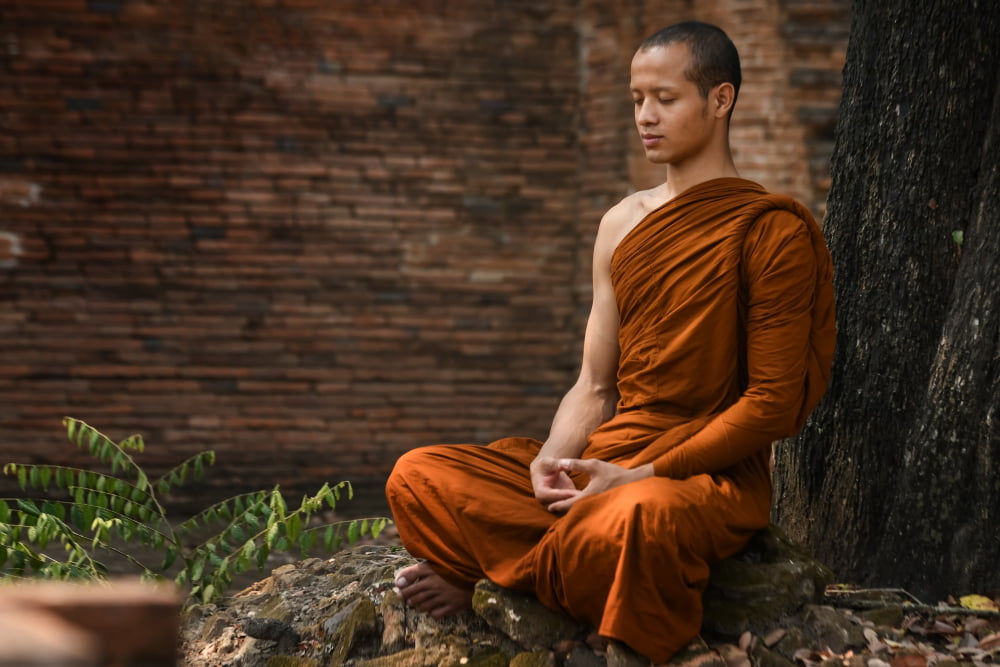
Traditionally, monks use meditation as a tool to cultivate peace, transcend worldly attachments, and achieve spiritual enlightenment. Practicing mindfulness, focusing on the present helps them to disengage from distressing thoughts, cultivating an inner tranquility and wisdom.
Furthermore, the consistent practice of meditation helps improve concentration. Monks usually focus on a certain object, mantra or their breathing – hence fortifying their ability to concentrate and reducing their susceptibility to distractions. This aids in the facilitation of a deeper spiritual insight and sharper cognitive functioning.
Additionally, regular meditation instills a strong sense of discipline in monks. Repetitive practice, even amidst emotional disturbances and physical discomforts, fosters self-discipline, aiding the development of patience.
Meditation also plays a pivotal role in shaping a monk’s existential perspective. It helps them grasp a deep understanding and appreciation of the transience of life phenomena, thereby encouraging a compassionate and empathetic stance towards others.
Notably, meditation lays the foundation for realizing a state of ‘no-self’ or ego dissolution in monks – a profound experiential understanding that self is merely an illusion.
In summary, meditation among monks stands as not only a spiritual exercise but a panacea to mental and emotional disturbances, a tool for cognitive enhancement, and a threshold to ward a deeper understanding of life and existence.
Long-term Effects of Meditation On a Monk’s Psychological Well-being
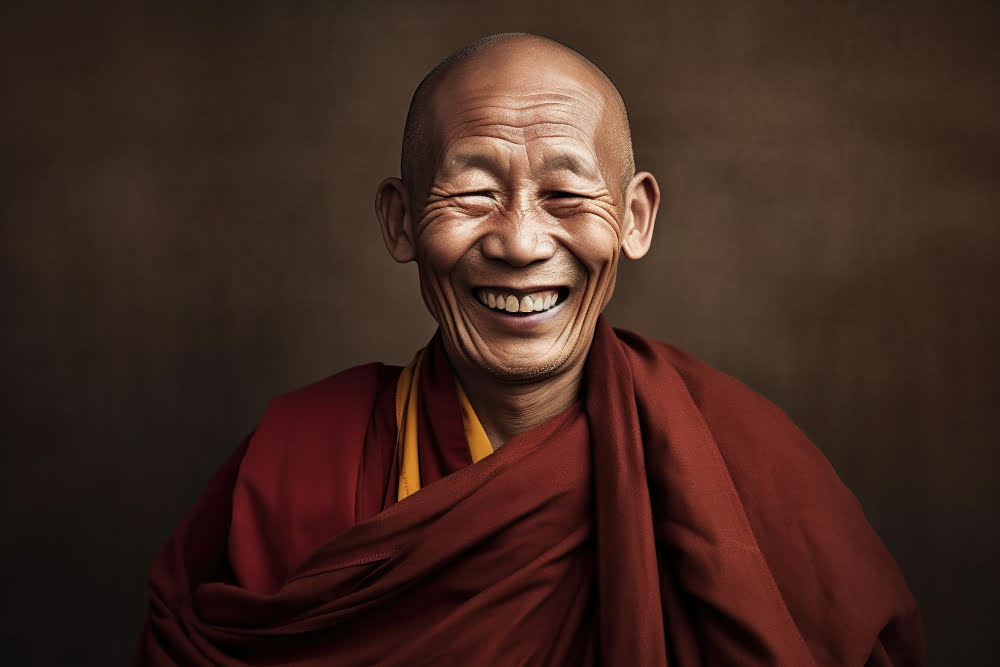
Embracing the practice of meditation invariably impacts the monk’s mental health positively. The long-term commitment to mindful introspection induces a shift in their cognitive and emotional framework.
1. Reduced Symptomatology of Depression and Anxiety: The recurring exercise of mindfulness helps in managing stress. It cultivates an adaptive response system to handle the emotional upheavals associated with depression and anxiety.
2. Enhanced Emotional Regulation: Monks show an improved ability for emotional regulation due to their constant mindful practices. It helps them to consciously acknowledge their emotional states without reacting impulsively.
3. Improved Attention Span: Long-term meditation practices contribute to a sharper and longer attention span. Monks exhibit a superior capacity to concentrate, even amidst distractions.
4. Increased Gray Matter Volume: Long-term meditation sessions have been studied to trigger an increase in the gray matter volume in the brain. This contributes to enhanced cognitive performance and processing skills.
5. Boosted Compassion and Empathy: A monk’s immersion in mindfulness practices fosters a profound understanding of human emotions, leading to heightened levels of empathy and compassion. They thoroughly understand and respect the emotional needs of other individuals without judgment.
By continually fine-tuning their mental faculties through meditation, monks achieve a harmonious blend of emotional well-being and improved cognitive performance.
Effects of Meditation On Monks’ Physiological Health

Studies have shown that consistent meditation helps monks to downregulate their sympathetic nervous system, decreasing their heart rate and blood pressure. This practice also improves the respiratory system by enabling controlled breathing.
A fascinating physiological effect is the visible changes in a monk’s brain structure. Regular meditation enhances the prefrontal cortex, responsible for decision-making and problem-solving, and the right anterior insula, which contributes to emotional awareness.
Furthermore, meditation reduces levels of cortisol, a stress hormone, in a monk’s body. This decrease reduces the risk of harmful effects associated with stress, such as inflammation and immune system suppression.
Interestingly, many monks have reported an increased pain threshold, likely due to their meditation practices.
Lastly, meditation also promotes restful sleep. It helps to increase the production of melatonin – a hormone that regulates sleep – leading to improved sleep quality.
Overall, these physiological benefits contribute to the monk’s hale and hearty lifestyle.
FAQ
How many hours do Buddhist meditate?
Buddhists typically meditate for durations varying from a few minutes to several hours, with some even sitting in meditation for up to 12 or even 24 hours.
How many hours do Shaolin monks meditate?
Shaolin monks typically dedicate approximately two hours each day to meditation.
How long does the Dalai Lama meditate each day?
The Dalai Lama meditates approximately seven hours each day.
How much do monks meditate in a day?
Monks typically meditate for approximately 1 to 2 hours per day, divided into 2 or 3 sessions.
What is the average duration of meditation sessions in Zen monasteries?
The average duration of meditation sessions in Zen monasteries is typically between 30 to 50 minutes.
How does the length of meditation periods differ between Theravada and Mahayana monks?
Theravada monks typically meditate for several hours a day while Mahayana monks may vary, incorporating shorter periods of meditation combined with other practices.
Are there any stipulated meditation durations in the routine of Tibetan monks?
Tibetan monks often meditate for several hours each day, although the duration can vary greatly from monk to monk.